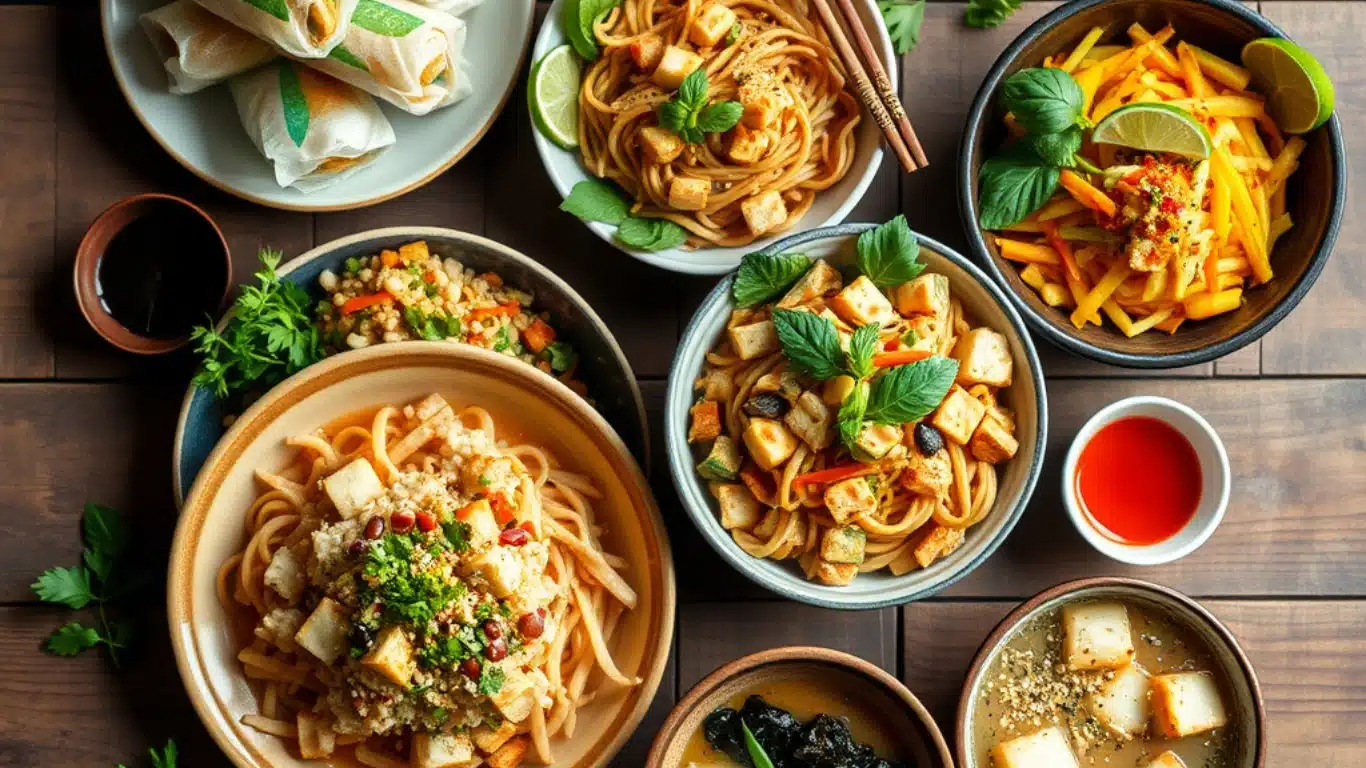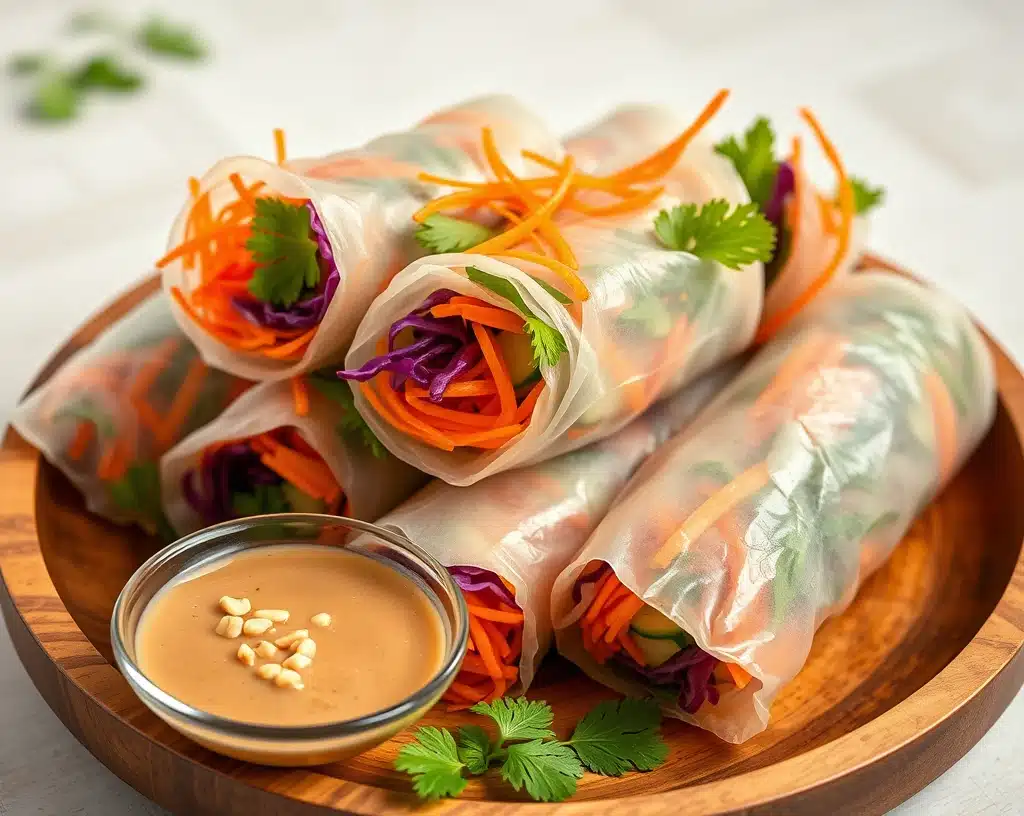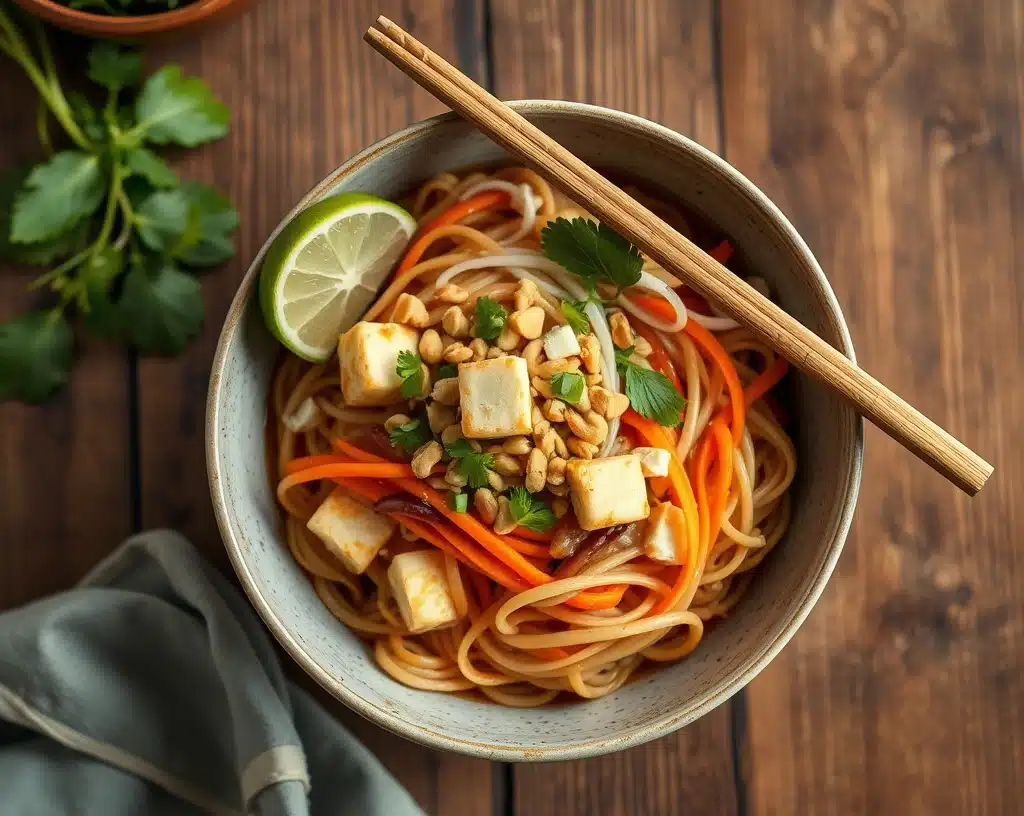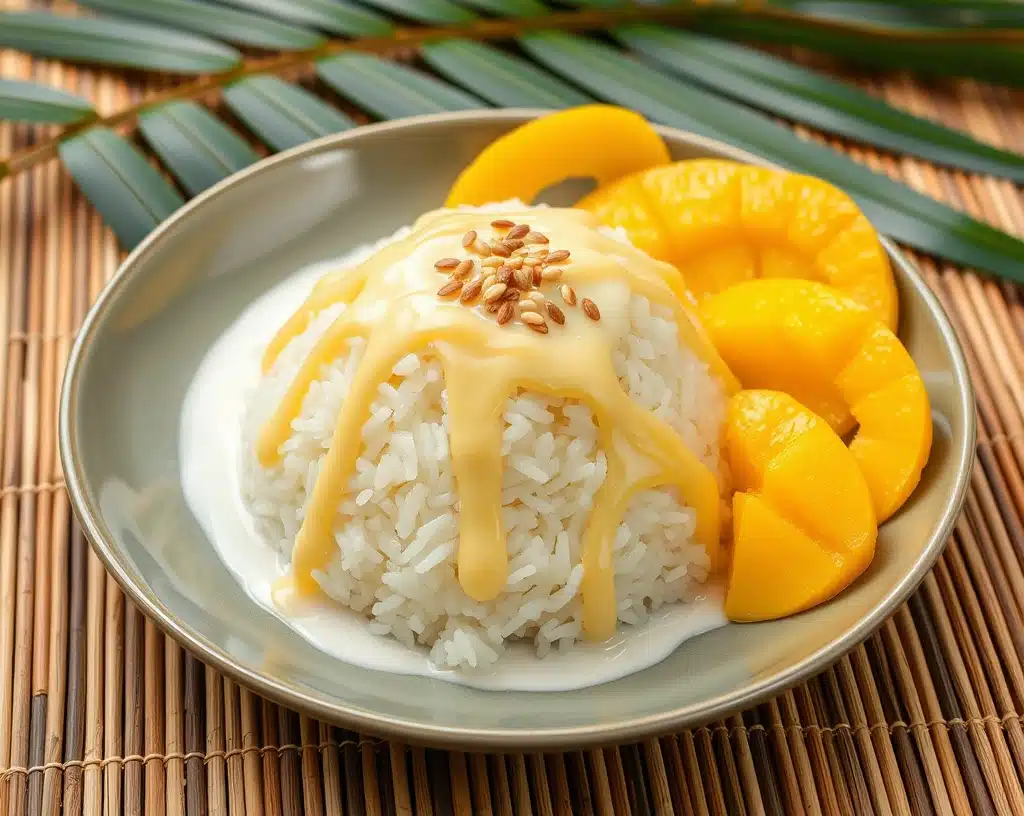Embarking on a culinary adventure through vegan Asian recipes is not only a delight for your taste buds but also a boon for your health. From vibrant stir-fries and hearty soups to indulgent desserts, these recipes showcase the versatility of Asian cuisine in a plant-based diet. Whether you’re a seasoned vegan or just exploring, you’ll discover how easy it is to create delicious, nutritious meals. Let’s dive into Part 1 of this exciting journey!
Why Choose Vegan Asian Recipes?
Health Benefits of Vegan Asian Cuisine
Asian cuisine is a treasure trove of plant-based ingredients that naturally align with vegan diets. Dishes from this region often rely on whole foods, which are rich in nutrients and low in saturated fats. Incorporating tofu, miso, and seaweed adds a boost of essential proteins, vitamins, and minerals to your diet. Plus, the variety of cooking techniques, like steaming and stir-frying, helps retain these nutrients. Transitioning to vegan Asian recipes can also support heart health and weight management. For instance, using fresh vegetables and lean protein sources like edamame offers a balanced, low-calorie meal. Moreover, Asian spices, such as ginger and turmeric, have anti-inflammatory properties, promoting overall well-being.
Cultural Significance of Asian Vegan Cooking
Veganism has deep roots in many Asian cultures. Countries like India, Japan, and Thailand have long embraced plant-based meals as part of their traditions. For example, Buddhist vegetarian cuisine, known as Shojin Ryori in Japan, eliminates the use of meat while maintaining rich flavors with ingredients like sesame and soy. Beyond tradition, Asian vegan cooking emphasizes harmony in meals. Each dish balances flavors—sweet, sour, salty, bitter, and umami—ensuring every bite is satisfying. This cultural ethos makes the cuisine not just delicious but also nourishing for both body and soul.
Essential Ingredients in Vegan Asian Recipes
Core Pantry Staples for Vegan Asian Cooking
To create authentic vegan Asian recipes, stocking up on key pantry staples is essential. Soy sauce, tamari, and coconut aminos serve as the foundational flavor enhancers, providing that signature umami taste. For those who prefer gluten-free options, tamari or coconut aminos are perfect substitutes. Rice varieties such as jasmine, basmati, and sticky rice are staples across many Asian cuisines, offering a versatile base for countless dishes.
Asian herbs and spices, including ginger, garlic, and lemongrass, add depth and aroma to your meals. These ingredients not only elevate the flavors but also provide health benefits like improved digestion and anti-inflammatory properties. Keeping a mix of dried and fresh versions ensures you’re always ready to whip up a flavorful dish.
Protein Sources
Asian vegan cooking excels in offering diverse, plant-based protein sources. Tofu, a versatile ingredient, absorbs flavors beautifully and can be prepared in numerous ways, from frying to steaming. Tempeh, made from fermented soybeans, provides a nutty texture and a boost of probiotics for gut health. For a meatier alternative, seitan delivers a high-protein option with a satisfying chew.
Edamame, young soybeans often served steamed or in stir-fries, adds a pop of color and a protein punch. Pair these with legumes like mung beans or chickpeas, and you’ll have a nutrient-packed meal that’s hearty and delicious.
Flavors and Seasonings
Flavors are the soul of Asian cuisine. Incorporate miso paste for its savory richness in soups and marinades. Tamarind lends a tangy kick, perfect for curries or noodle dishes. Chili paste, whether sambal oelek or gochujang, introduces a fiery element for spice lovers. Rice vinegar and black vinegar add acidity and depth, essential for balance in salads, stir-fries, and dipping sauces.
These staples, proteins, and seasonings are your tools to transform simple ingredients into extraordinary dishes. With a well-stocked pantry, you’ll be ready to explore the vast world of vegan Asian cooking.
10 Best Vegan Asian Recipes
Easy Starters and Appetizers
Spring Rolls with Peanut Sauce
Ingredients:
- Rice paper wraps (10 sheets)
- 1 cup julienned carrots
- 1 cup shredded purple cabbage
- 1 cup cucumber strips
- 1/2 cup fresh mint leaves
- 1/2 cup fresh cilantro leaves
- 1/2 cup cooked rice noodles
- 1/4 cup crushed peanuts (optional)
Peanut Sauce:
- 1/4 cup peanut butter
- 2 tbsp soy sauce
- 1 tbsp rice vinegar
- 1 tbsp maple syrup
- 1/2 tsp chili flakes
- Water to thin
Instructions:
- Prepare all filling ingredients and place them in separate bowls.
- Wet a rice paper sheet in warm water until pliable. Lay it flat on a clean surface.
- Add a small amount of each filling ingredient in the center.
- Fold the sides of the rice paper over the filling, then roll tightly from one end to the other.
- Repeat with the remaining sheets.
- Mix all peanut sauce ingredients in a small bowl, adding water to reach your desired consistency.
- Serve spring rolls with peanut sauce on the side.
Vegan Dumplings
Ingredients:
- 2 cups all-purpose flour
- 3/4 cup water
- 1 tbsp sesame oil
- 1 cup finely chopped mushrooms
- 1/2 cup grated carrots
- 1/2 cup finely shredded cabbage
- 2 tbsp soy sauce
- 1 tsp minced ginger
- 1 tsp minced garlic
Instructions:
- Mix flour and water to form a dough. Knead for 5 minutes, cover, and let it rest for 30 minutes.
- Heat sesame oil in a pan, then sauté mushrooms, carrots, and cabbage until soft.
- Add soy sauce, ginger, and garlic to the mixture. Cook for another 2 minutes.
- Roll out the dough and cut into small circles. Place a teaspoon of filling in the center of each circle.
- Fold the dough into half-moon shapes, sealing the edges.
- Steam the dumplings for 10 minutes or pan-fry for a crispy texture.
- Serve with soy sauce or chili oil.
Main Course Recipes
Vegan Pad Thai
Ingredients:
- 8 oz rice noodles
- 1 tbsp sesame oil
- 1/2 cup firm tofu, cubed
- 1 cup bean sprouts
- 1/2 cup shredded carrots
- 2 green onions, chopped
- 2 tbsp tamarind paste
- 3 tbsp soy sauce
- 1 tbsp maple syrup
- 1/2 tsp chili flakes
- 1/4 cup crushed peanuts
Instructions:
- Cook rice noodles according to package instructions. Drain and set aside.
- Heat sesame oil in a pan. Add tofu and cook until golden brown.
- Toss in bean sprouts, carrots, and green onions, cooking for 3 minutes.
- Mix tamarind paste, soy sauce, maple syrup, and chili flakes in a bowl.
- Add noodles and sauce to the pan. Stir to coat evenly.
- Top with crushed peanuts before serving.
Soups and Salads
Miso Soup with Seaweed
Ingredients:
- 4 cups vegetable broth
- 2 tbsp miso paste
- 1/2 cup cubed tofu
- 1/4 cup dried seaweed (wakame)
- 2 green onions, sliced
- 1 tsp soy sauce
- 1/4 tsp sesame oil (optional)
Instructions:
- Heat the vegetable broth in a medium saucepan until simmering.
- Dissolve miso paste in a small bowl with a bit of warm broth, then add it back to the pot.
- Add cubed tofu and dried seaweed. Simmer for 5 minutes or until seaweed softens.
- Stir in soy sauce and sesame oil, if using.
- Garnish with sliced green onions and serve immediately.
Spicy Asian Slaw
Ingredients:
- 2 cups shredded purple cabbage
- 1 cup shredded carrots
- 1/4 cup chopped cilantro
- 2 tbsp rice vinegar
- 1 tbsp lime juice
- 1 tbsp soy sauce
- 1 tbsp sesame oil
- 1 tsp chili flakes
- 1 tsp maple syrup
Instructions:
- In a large bowl, combine shredded cabbage, carrots, and chopped cilantro.
- In a small bowl, whisk together rice vinegar, lime juice, soy sauce, sesame oil, chili flakes, and maple syrup.
- Pour the dressing over the vegetables and toss to combine.
- Let the slaw sit for 10 minutes to allow flavors to meld.
- Serve chilled or at room temperature.
Desserts and Snacks
Mango Sticky Rice
Ingredients:
- 1 cup sticky rice
- 1 1/2 cups coconut milk
- 1/4 cup sugar
- 1/4 tsp salt
- 1 ripe mango, sliced
- 1 tbsp toasted sesame seeds
Instructions:
- Cook the sticky rice according to package instructions.
- In a saucepan, combine coconut milk, sugar, and salt. Heat gently until sugar dissolves, but do not boil.
- Pour half of the coconut mixture over the cooked rice and let it soak for 10 minutes.
- Serve the rice with sliced mango on top. Drizzle the remaining coconut sauce and sprinkle with sesame seeds.
Matcha Green Tea Cookies
Ingredients:
- 1 cup all-purpose flour
- 1/2 cup powdered sugar
- 1 tbsp matcha powder
- 1/4 tsp salt
- 1/2 cup vegan butter
- 1 tsp vanilla extract
Instructions:
- Preheat the oven to 350°F (175°C).
- In a bowl, whisk together flour, powdered sugar, matcha powder, and salt.
- Add vegan butter and vanilla extract. Mix until a dough forms.
- Roll the dough into small balls and flatten slightly on a baking sheet.
- Bake for 10-12 minutes until edges are lightly golden.
- Cool completely before serving.
These soups, salads, and desserts complete a flavorful vegan Asian meal. You can now mix and match dishes to create a memorable dining experience.
Tips for Cooking Vegan Asian Recipes
Cooking Techniques
Mastering vegan Asian cooking begins with understanding a few key techniques. Stir-frying is one of the most common methods and requires a hot wok or skillet to achieve that perfect, slightly charred flavor. Always prepare and organize your ingredients beforehand since the cooking process is fast-paced. When stir-frying, add ingredients in stages—starting with aromatics like garlic and ginger, followed by proteins, and finally, vegetables.
Steaming is another essential technique, especially for delicate dishes like dumplings and buns. Use a bamboo steamer or a metal rack to steam vegetables and proteins, retaining their nutrients and texture. Boiling is suitable for soups, but avoid overcooking to preserve the vibrant colors and crunch of vegetables.
Ingredient Substitutions
Sometimes, you may not have access to traditional Asian ingredients, but substitutions can save the day. For instance, if soy sauce isn’t an option, tamari or coconut aminos offer similar salty, umami flavors and are gluten-free. When fish sauce is required, opt for a vegan version made with seaweed or mushrooms. Coconut milk is a versatile replacement for dairy in creamy curries and desserts.
For sweeteners, switch refined sugar with natural alternatives like maple syrup or agave nectar. These options not only match the flavor profile but also align with the health-conscious nature of vegan Asian recipes.
Common Mistakes to Avoid
Even seasoned cooks make mistakes, but awareness can help you sidestep these pitfalls. Avoid overloading your wok or pan during stir-frying; this lowers the temperature and leads to soggy, unevenly cooked ingredients. Cook in small batches to maintain that desired crispiness.
Don’t rely too heavily on soy-based products like tofu and soy sauce. Balance your meals by incorporating other proteins like tempeh or legumes and using diverse seasonings to avoid monotony. Lastly, always taste and adjust the seasoning as you go. Flavors like salty, sweet, and spicy should harmonize for a well-rounded dish.
These tips will ensure your vegan Asian recipes turn out perfect every time, combining authentic flavors with a modern, plant-based twist. Next: Frequently asked questions about vegan Asian recipes to deepen your understanding!
FAQs About Vegan Asian Recipes
What Are Popular Vegan Asian Recipes?
Vegan Asian recipes span a wide variety of dishes that are loved worldwide. From vibrant stir-fries and hearty noodle dishes like Vegan Pad Thai, to flavorful soups such as Miso Soup with Seaweed, the options are endless. Desserts like Mango Sticky Rice and snacks like Spring Rolls with Peanut Sauce also take center stage. These dishes highlight the natural richness of plant-based ingredients.
How Can I Make Traditional Asian Dishes Vegan?
Many traditional Asian recipes can be adapted to a vegan lifestyle with simple ingredient swaps. Replace meat or seafood with plant-based proteins such as tofu, tempeh, or jackfruit. For broths and curries, use vegetable stock instead of meat-based ones. Substituting fish sauce with a vegan version made from soy sauce and seaweed will maintain the depth of flavor while keeping it plant-based.
Are All Asian Sauces Vegan?
Not all Asian sauces are vegan. While soy sauce, tamari, and hoisin sauce are usually vegan, some contain hidden animal-derived ingredients. Oyster sauce and fish sauce are common non-vegan culprits. Always check labels or opt for vegan-certified versions available in stores.
What Are the Best Substitutes for Fish Sauce?
Fish sauce is a key ingredient in many Asian dishes, but there are excellent vegan alternatives. Soy sauce mixed with lime juice replicates the salty and tangy flavor. Seaweed-based sauces or mushroom-based broths add umami and depth to your dishes. Additionally, store-bought vegan fish sauce is becoming increasingly popular.
What Asian Cuisines Are Most Vegan-Friendly?
Several Asian cuisines are naturally inclined towards veganism. Indian cuisine, for example, boasts a rich variety of vegan curries, lentil dishes, and breads. Japanese cuisine offers plant-based options like vegetable sushi and miso soup. Thai and Vietnamese cuisines also shine with dishes like Papaya Salad and Vegetarian Pho, making them excellent choices for vegans.
These FAQs aim to address common queries and provide insights to help you embrace the art of vegan Asian cooking. With these answers, you’re now equipped to explore and experiment confidently.
Conclusion: Embrace the World of Vegan Asian Recipes
Cooking vegan Asian recipes is a delightful journey that celebrates vibrant flavors, wholesome ingredients, and the art of balance. Whether you’re crafting a quick stir-fry, steaming dumplings, or indulging in sweet mango sticky rice, each dish offers a unique blend of taste and nutrition.
The beauty of Asian cuisine lies in its adaptability—simple ingredient swaps make it easy to veganize traditional dishes without compromising on authenticity. By stocking up on essential pantry staples, mastering basic cooking techniques, and following these tips, you’ll unlock a world of plant-based possibilities.
The cultural richness and health benefits of Asian vegan cooking make it an excellent addition to any diet. So, whether you’re a vegan newbie or a seasoned plant-based eater, dive into this deliciously diverse cuisine. With these recipes and tips, you’ll be well-equipped to create meals that are not just nourishing but also truly unforgettable.



